Medellín Walking Tour & The Stages of Grief
Part 1: War (1850-1903)
On a walking tour through Medellín, Colombia you can see the story of Colombia of the past 170 years. It is chaotic, stunning, heart-wrenching, and moving. As the second largest city in Colombia, Medellín has been a center of this story. The majority of this tour took place in La Candelaria, the center/downtown of the city.
This story starts in 1850. Before this time, there is obviously history of Colombia, which includes many of the common features of the history of the Americas: Indigenous life, European arrival, violence and conflict, disease-enhanced genocide, etc.
- 1717 - 1723: Viceroyalty of New Granada (Spanish Empire)
- 1723-1739: Viceroyalty suspended for financial reasons.
- 1739-1810: Viceroyalty of New Granada reinstituted
- 1810-1816: United Provinces of New Granada (the country formed after the first movement of independence from the Spanish Empire)
- 1816-1831: Viceroyalty of New Granada (land taken back by the Spanish Empire)
- 1831: Gran Colombia formed (the country of the second, lasting independence movement, which, although some of its territory has become part of other modern-day countries, most represents the start of Colombia as we know the country today)
So, at this point (1851), Colombia had only existed as an independent country for 19 years. As with any newly formed state, Colombia was fragile and lacking deep-rooted institutions, which made it a territory ripe for conflict between people fighting for power and prone to upheavals, chaos, and near-constant change.
Between 1851 and 1902, there were seven civil wars in Colombia.
1A) Palacio de la Cultura Rafael Uribe Uribe
The building in the picture below is the Palacio de la Cultura Rafael Uribe Uribe. Uribe was a Colombian man known for many things, among which is his work as a general and participation in two civil wars in Colombia during this time. (He has two Uribe's in his name because both of his parents--father and mother--had this surname even before their marriage.)
Uribe was a member of the Colombian Liberal Party. He first participated in the Colombian Civil War of 1876, which is also known as the War of Schools. In this war, the Colombian Liberal Party and Colombian Conservative Party fought over whether education in Colombia should be under the control of the Roman Catholic Church (as the conservatives wanted) or public and run by the Colombian states (as the liberals wanted). (The liberals won.)
Uribe also participated in the Colombian Civil War of 1895. This war was waged by the Liberal Party against the Conservative Party, who at that time controlled the government, over the government's crackdown on dissent and violation of individual liberties around the country.
(As of 2023, the Liberal Party is the largest in Colombian Congress.)
Up until 1903, the isthmus of Panama was part of Colombia. In 1903, Panama became its own independent country, backed to secede from Colombia by the United States, a country that has possessed a lot of power and influence over Latin American affairs over the past few centuries and had plans of building the Panama Canal through the isthmus. You can see, given Colombia's state of chaos and lack of organization, how easy it must have been for the United States to swoop in and implement this project of Panamanian independence.
Anyway, Rafael Uribe Uribe has become an iconic person of this civil war era of Colombian history due to his various roles in it. Fun fact: Colonel Aureliano Buendía's character in the famous novel 100 Years of Solitude is loosely based on Uribe.
This building was initially built starting in 1925 as the official building for the Government of Antioquia. At this point, it was known as Calibío Palace. In 1987, the building was renamed after Rafael Uribe Uribe. Today, it houses cultural programs, such as concerts, conferences, and art exhibitions.
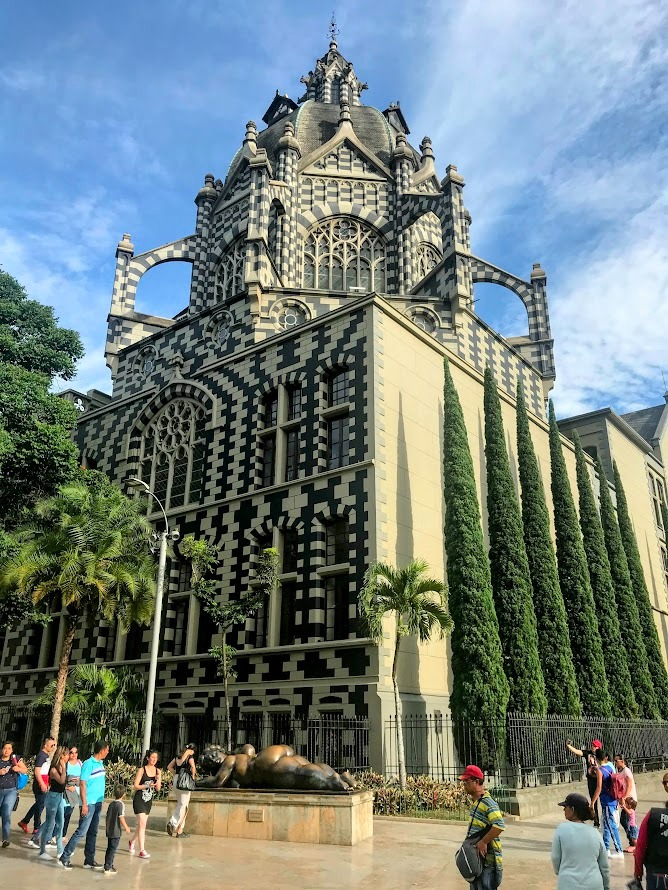
1B) Parque Berrío
This plaza is named for conservative politician and Governor of Antioquia Pedro Justo Berrío, who enjoyed his prominence in the 1860's and 70's. The plaza has existed since the 1700's. Over the years it was the site of marketplaces and public executions. Today, it is full of people socializing and strolling, and vendors. In the background, you can see the Parque Berrío Metro Station.

Part 2: Growth and Development (1900-1950)
During the first half of the 20th century, Colombia as a nation finally began to take form. Walking through Medellín, there are all sorts of evidence of institutions and infrastructure being developed in order to help the country organize itself and grow.
2C) Ferrocarril de Antioquia
This is the Railroad Station of Antioquia. Its construction began in 1874, but didn't finish until 1929. The railroad was a massive factor in the development of Antioquia, one of 32 departments (the U.S. equivalent of states) in Colombia, and its biggest city, Medellín. The railroad enabled the trafficking of goods and produce from the countryside, most notably the export of coffee, which became an enormous source of revenue for this region of Colombia.
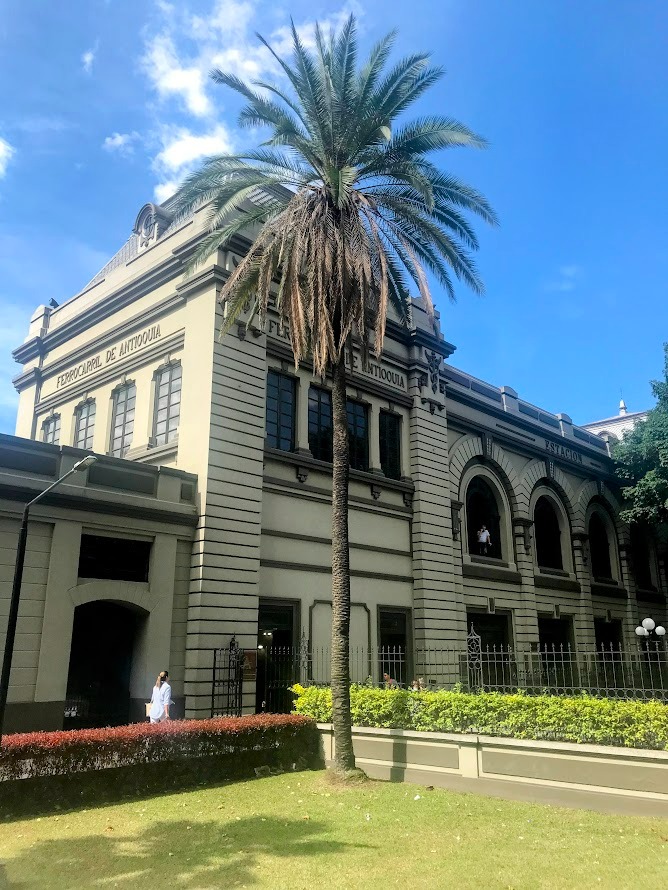
2D) Alcadía de Medellín
The first picture below shows a plaza that is surrounded by a number of important buildings, including bank headquarters, the old railroad station, the town hall of Medellín, and more. The second picture shows the Acaldía, or town hall, which houses various government offices.
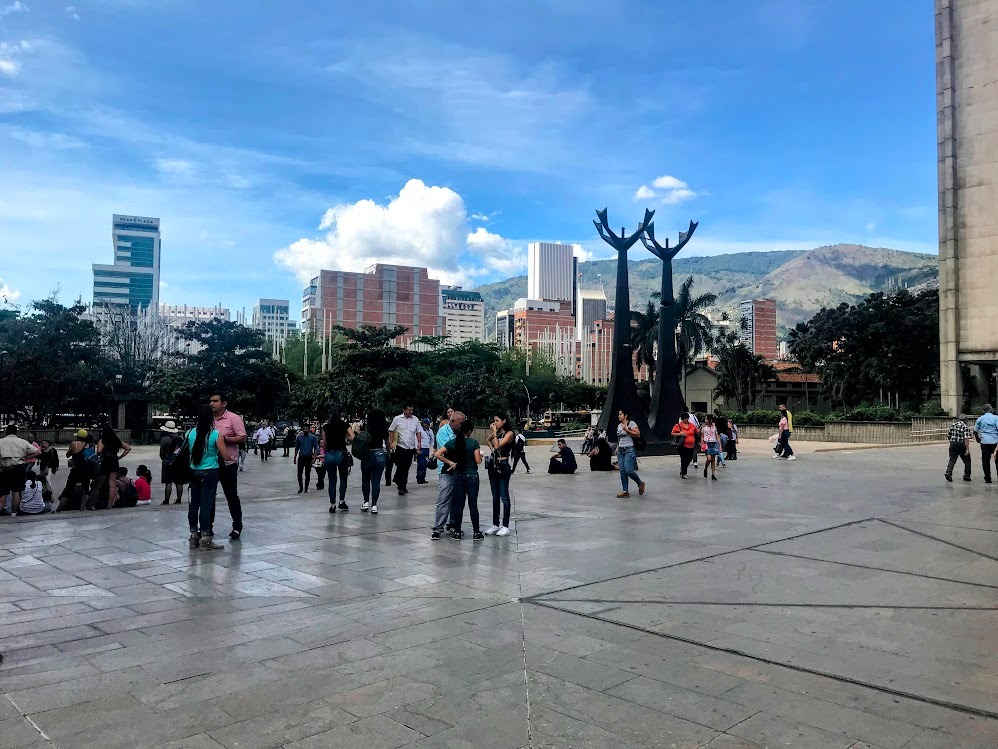
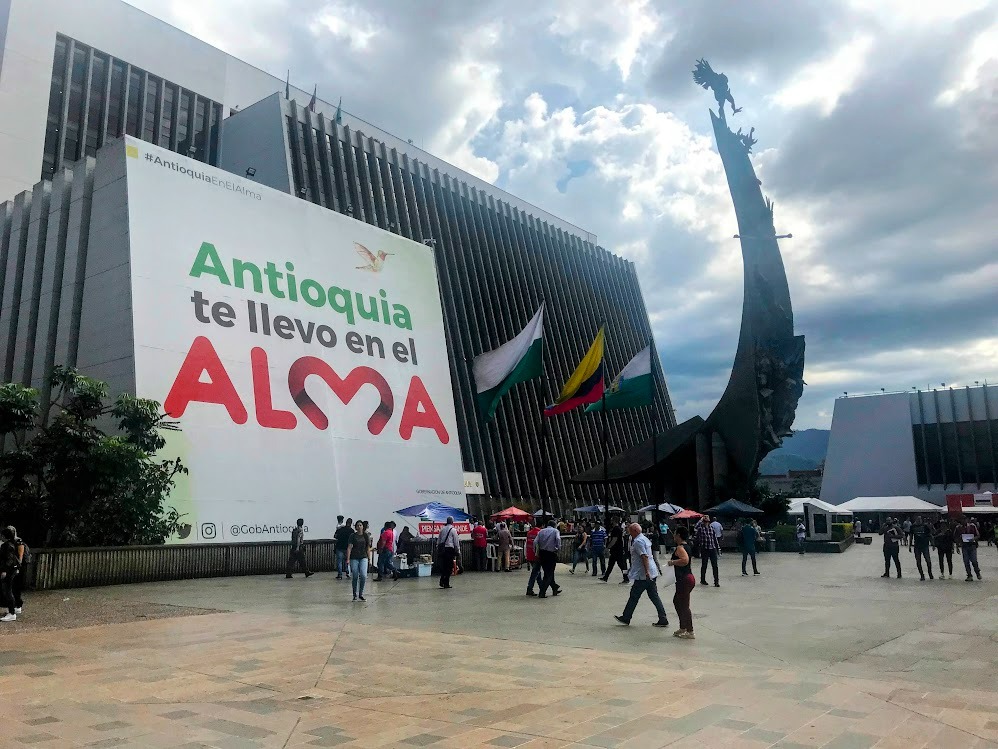
2E) Centro Comercial Palacio Nacional
This building was initially built to house public offices (1933-1993) and now is a mall.
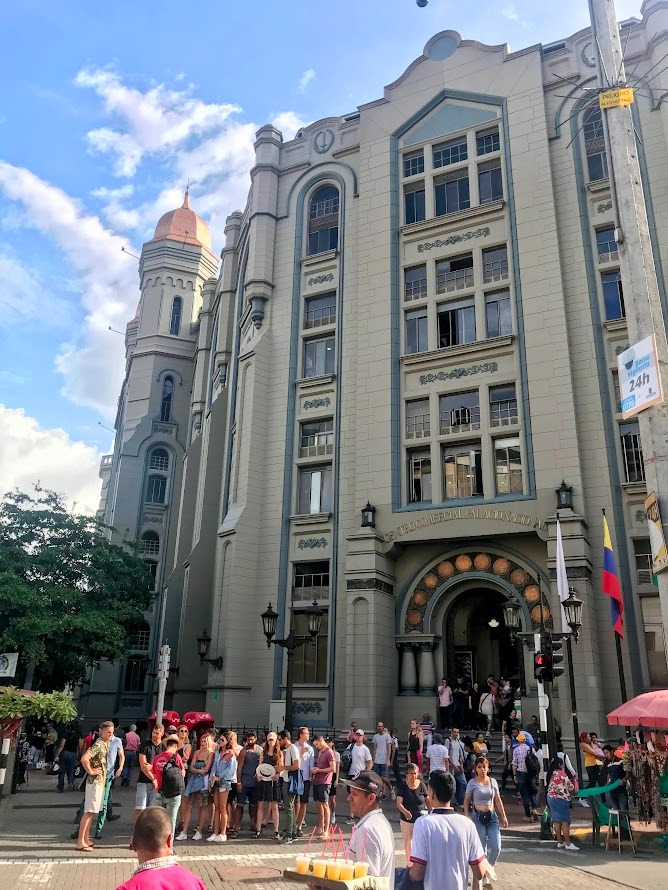
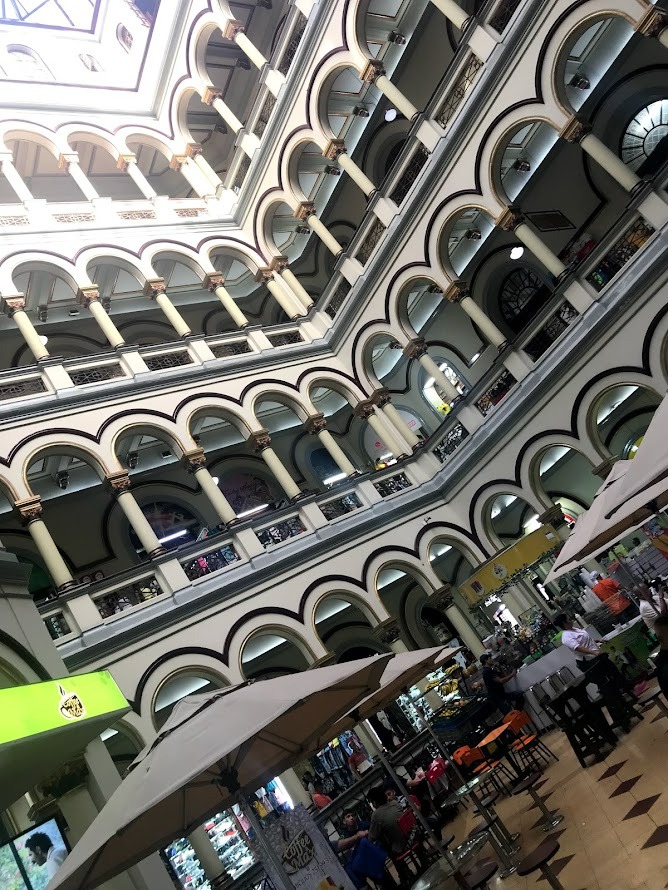
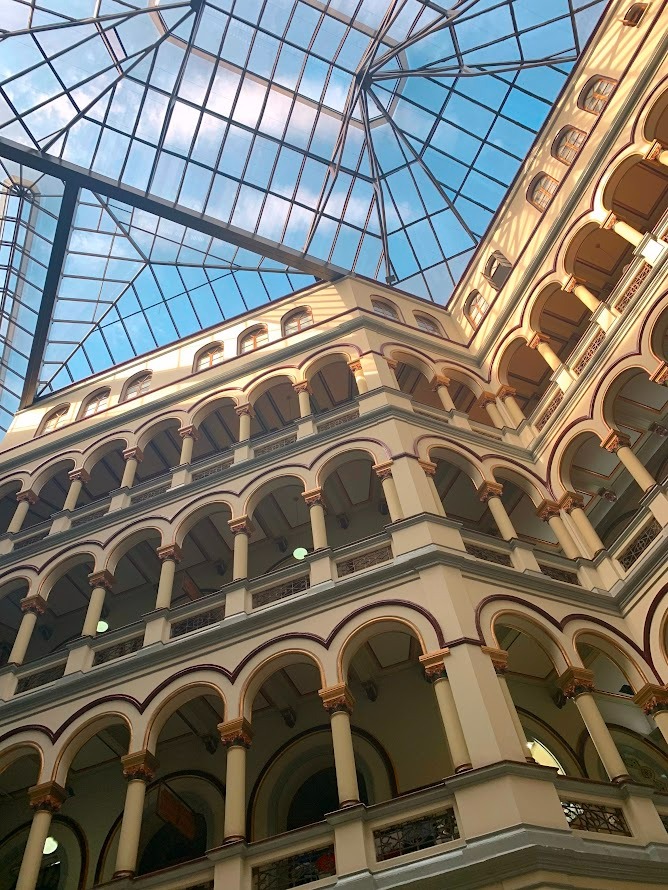
Part 3: Dark Days (1948-2016)
We see in world history that violence is sometimes cultural. There are places where violence seems to persist because it has been naturalized, or accepted as part of life, and then learned and repeated.
Colombia is one of these places where this phenomenon has occurred. During this half-century, Colombia descended into a period of chaos and violence due to a variety of groups working for control, power, and influence over the country.
From 1948-1958, a period known as La Violencia, there was another civil war fought between the liberal and conservative parties.
In the 1960's, guerilla movements evolved. (A guerilla is a member of an irregular military force that uses a series of small-scale actions, including sabotage and terrorism, to fight against conventional, state-run military forces.) Many of these guerilla fighters endorsed communism as their political ideology. The most prominent of these groups are FARC (Fuerzas Armadas Revolucionarias de Colombia), and M-19.
In the 1970's, drug cartels, most notably the Medellín and Cali Cartels, evolved. Initially, they seemed to sympathize with leftists. Pablo Escobar, the famous patrón of the Medellín Cartel, was elected to the Chamber of Representatives (the lower house of Colombia's Congress) as a member of the Liberal Alternative movement due to his popularity among the people in poor villages where he sponsored numerous community development projects. But, in the 1980's, the cartels seemed to shift alliances and associate more with extreme right-wing businessmen and military officers, assisting in the assassination of various leftist politicians and dissidents.
In the 1980's, right-wing paramilitary groups grew in power. They opposed FARC and killed thousands of leftist politicians.
Perhaps the best place to learn about this history (if not on the Internet) is the Casa de la Memoria, a museum outside of central Medellín devoted to the sad history of violence in Colombia and all of the innocent people who have lost their lives because of it.
On our walking tour, these dark days of Colombian history were constantly referenced--It's impossible to avoid them--but we obviously didn't spend a ton of time glorifying this time. This era is immensely sad. Plus, maybe there isn't a lot that is representative of the era to look at because it was a time of destruction.
Part 4: Reconstruction
Although era four in my article here, in the seven stages of grief (the extension of Elisabeth Kubler-Ross's work that initially defined five stages of grief), reconstruction is stage six. Colombia has been trying to rebuild itself and you can see evidence of it all over Medellín. There are malls, pedestrian streets, and beautiful plazas. The infrastructure and cleanliness is also impressive.
4F) Parque de Las Luces
This park was initially (and still is also) known as Plaza Cisneros. It was once the main marketplace in Medellín. Farmers and traders would gather here to sell their goods.
Remember the Antioquia Railroad Train Station? Plaza Cisneros evolved as the site of a marketplace because it was located just across the street from the train station, where trains would arrive from the countryside with goods.
In the 1960's, however, Colombia's railroad system went bankrupt. In the 1990's, the market was moved to a different location. As a result, Plaza Cisneros fell into a state of decline. It became a gathering place notorious for thieves, drug addicts, and prostitutes.
As part of a plan to renovate the center of Medellín, between 2002 and 2005 Plaza Cisneros was redeveloped. Architect Juan Manuel Peláez created the design you can see in the picture below, which consists of 300 light pillars that are meant to create an artificial forest, providing shade during the day and light at night. The park is now a popular meeting point and place to relax.
This Web page provides an awesome timeline with pictures of the development and changes to the area of Plaza Cisneros: https://www.timetoast.com/time...
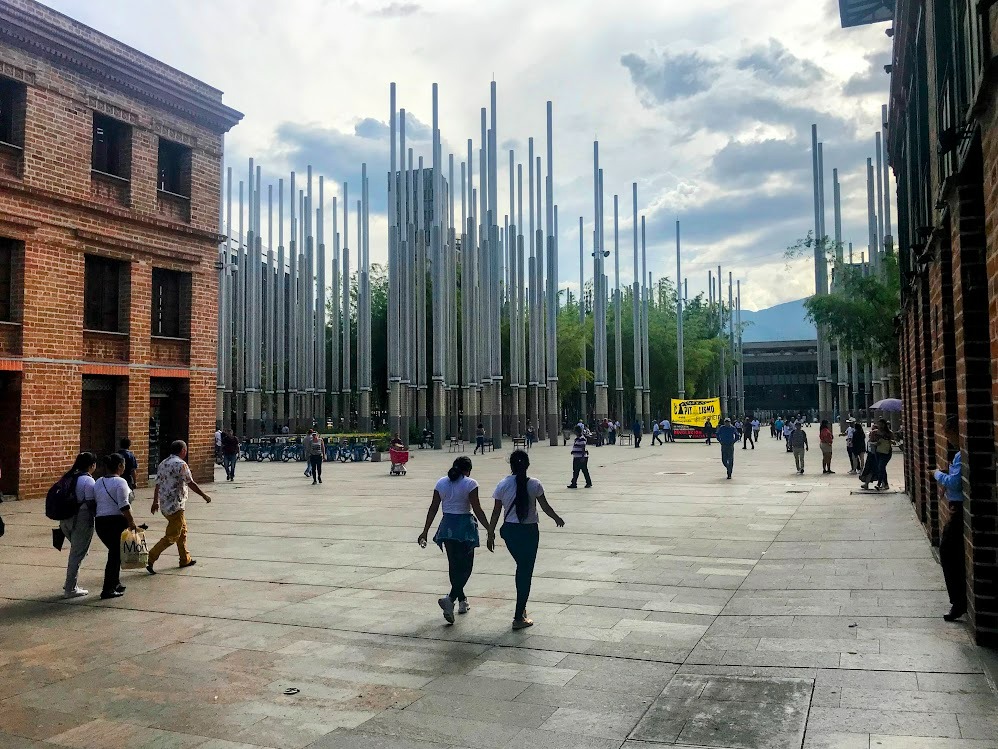
4G) Calle Junin
Pedestrian-only streets are also a popular feature of modern Medellín, highlighting the city's attempts to reconstruct itself as an accommodating, welcoming city where residents can enjoy life. The street in the picture below is Junin Street. It is filled with shops, restaurants, and other types of vendors. The street has its name because juninear in Colombian Spanish means, "window shopping."
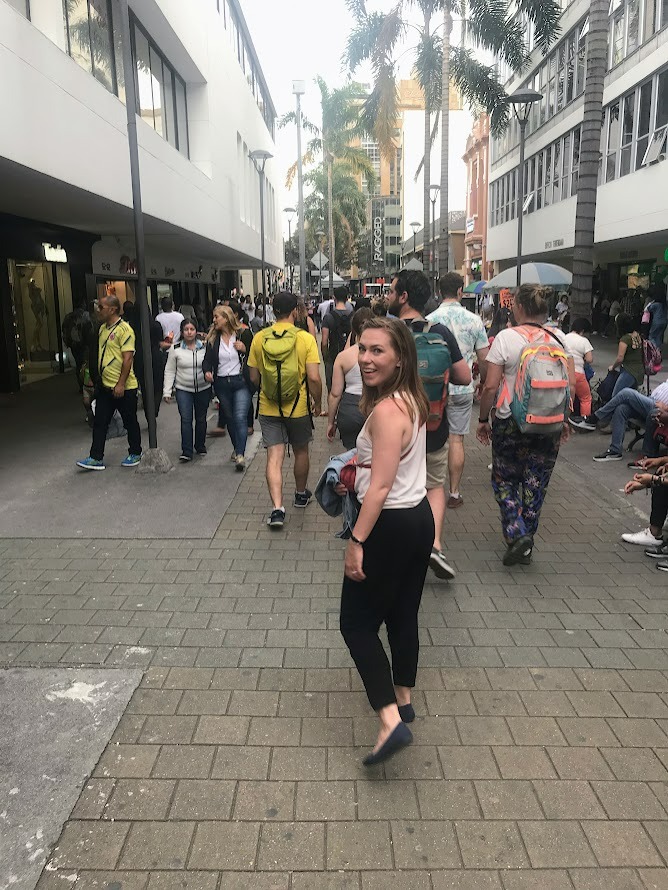
4H) Avenida Carabobo
This is another pedestrian street. Its name is the best part. Carabobo means "clown face."
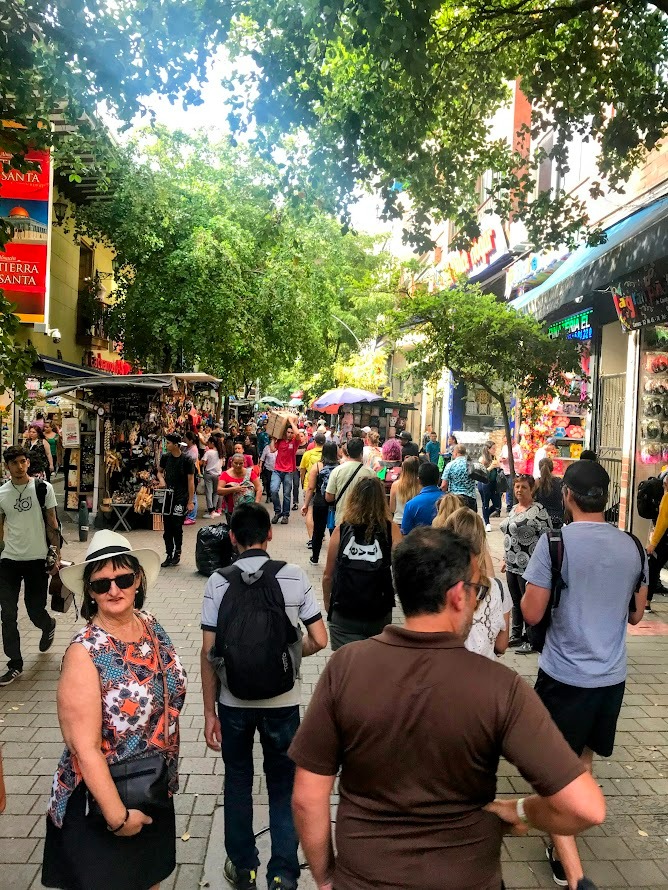
4I) Avenida Ayacucho
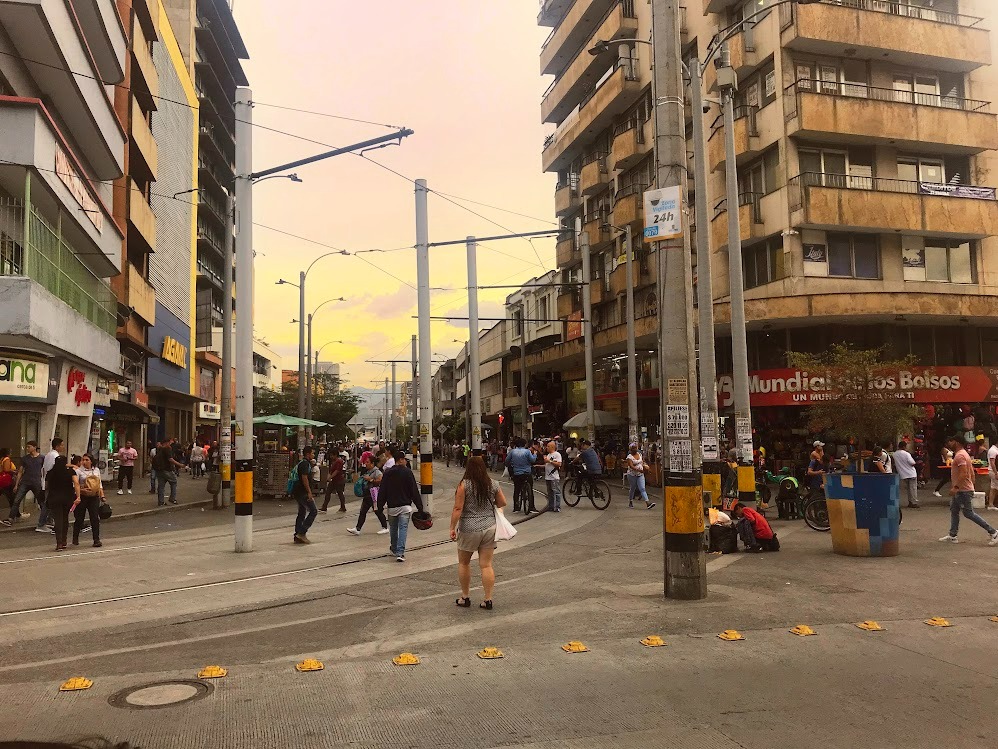
4J) Pasaje Comercial Cisneros
There are shopping malls embedded into the hallways of old buildings like this one:
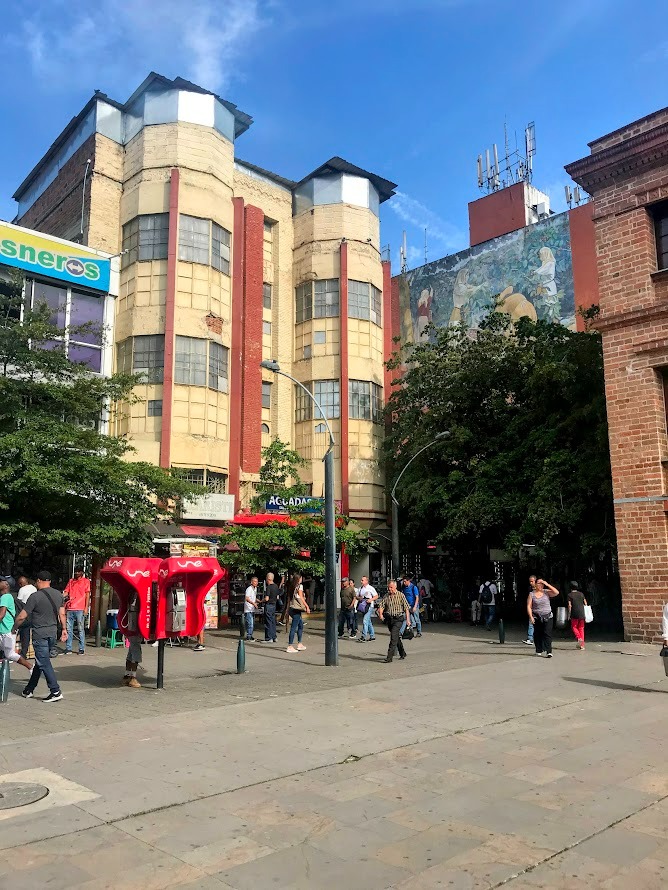
4K) Centro Comercial Astoria
... and look like this on the inside:
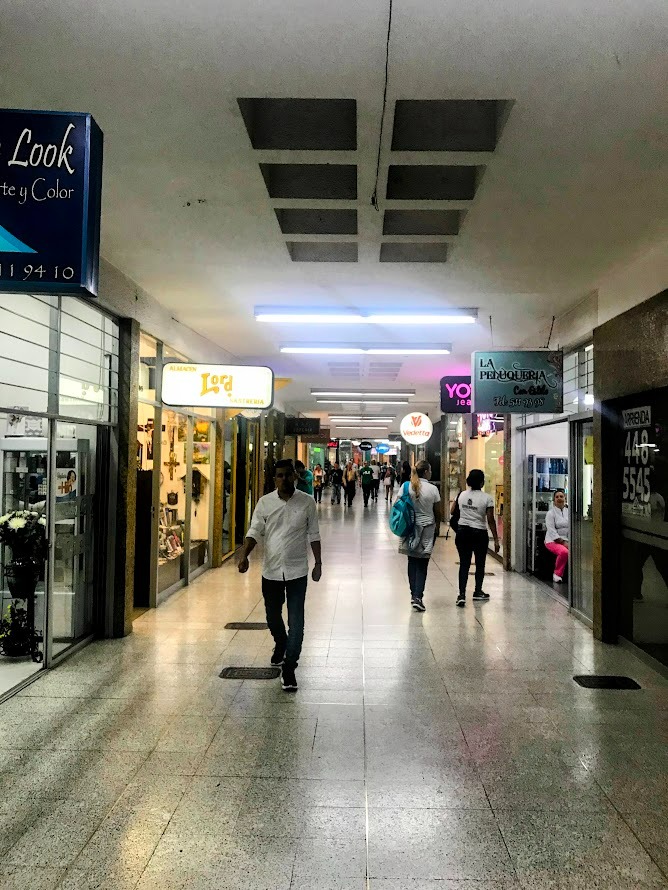
4L) Centro Comercial Santa Fé
And there are other massive, multi-level malls like this one below. (The Santa Fé Mall is located outside of La Candelaría, but I felt like it added to the story well here.)
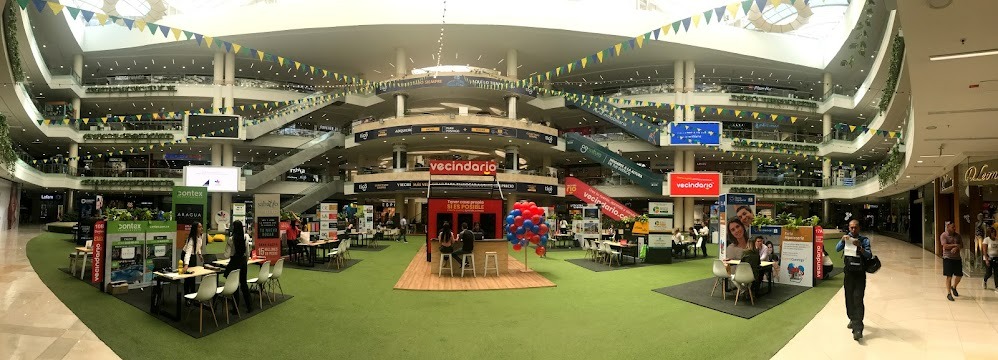
4M) More Infrastructure:
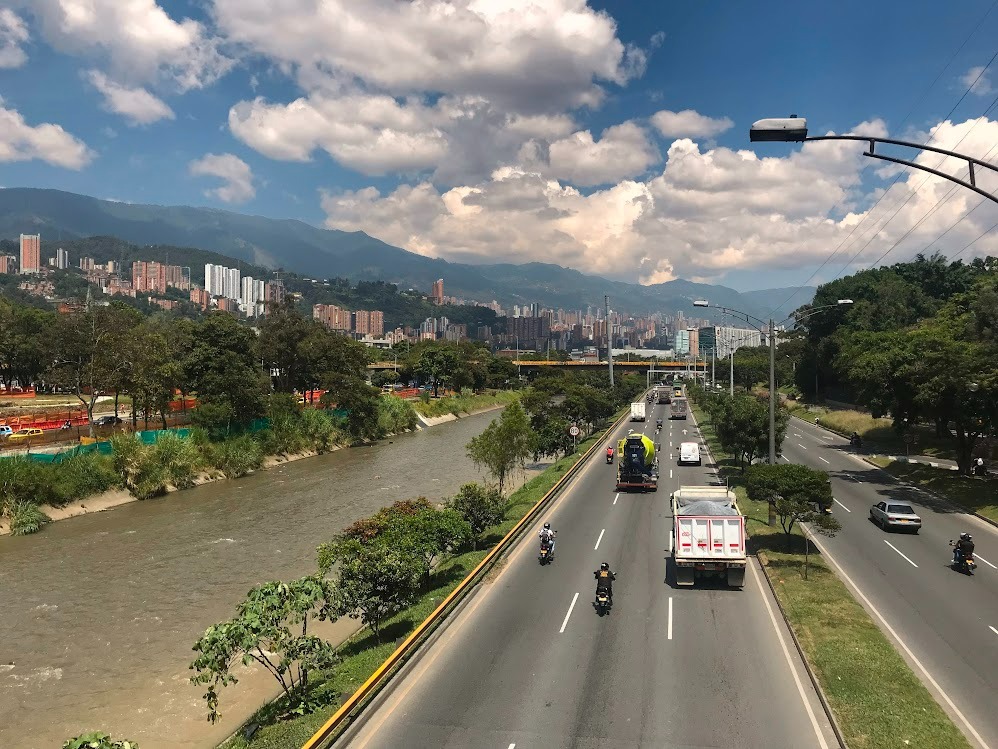
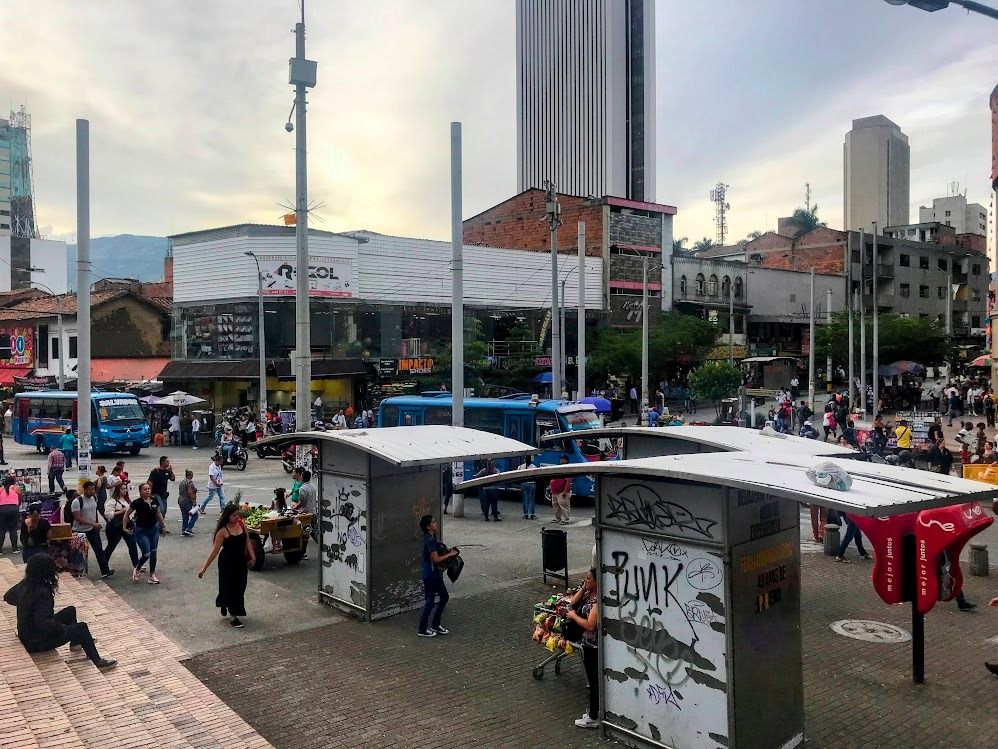
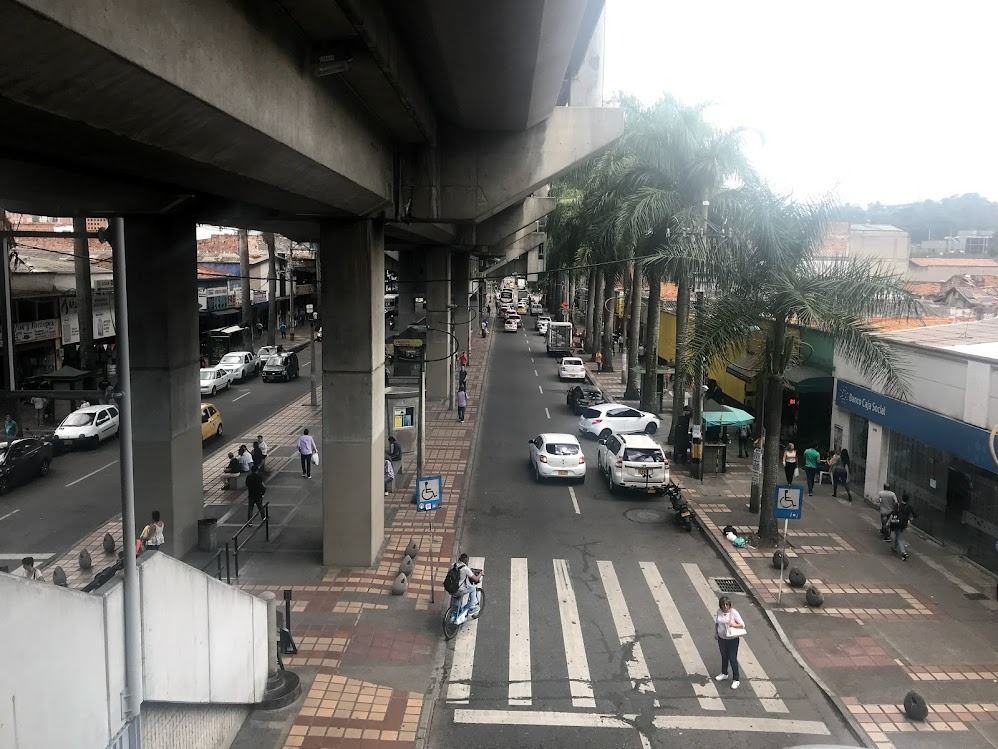
Part 5: Acceptance
The seventh stage of grief and fifth and sixth parts of my story involve acceptance and hope. First, there is evidence of acceptance of the country's past and hope for a better future all throughout Medellín.
5N) Monumento a Gilberto Echeverri and Guillermo Gaviria
There are public displays throughout Medellín that seek to remember people who were lost in the violence that plagued Colombia during the latter half of the 20th century. This monument is one of them. The monument is dedicated to Gilberto Echeverri, an electrical engineer and politician, and cabinet member of various liberal governments, and Guillermo Gaviria, a civil engineer, Liberal Party politician, and Antioquia Governor, both of whom were kidnapped and murdered by FARC in 2003.
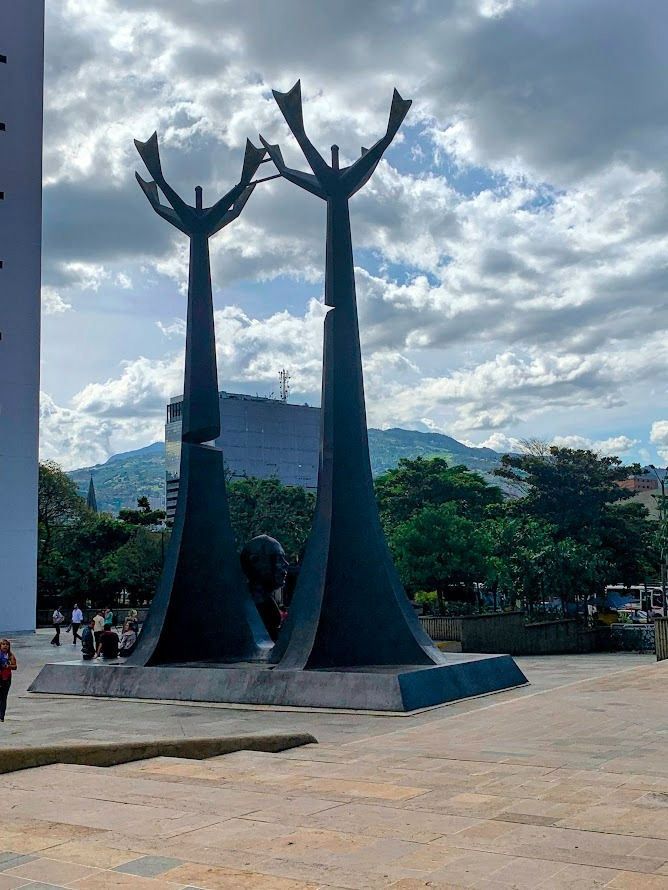
5O) Monumento a la Raza
Raza means "race" or "breed." La Raza is used in Spanish to refer to all Hispanophone populations.
This monument was designed by Colombian and Antioquan (Antioqueño in Spanish) sculptor Rodrigo Arenas Betancourt. The statue is meant to depicts the history and struggles of the Colombian people, specifically Antioqueños. It shows people climbing out of the mud, which is representative of rural Antioquia, and trying to get to the top. The monument symbolizes the culture of Antioquia, including its agriculture, religion, and solidarity.

5P) Plaza Botero
This plaza is one of Medellín's most famous attractions thanks to the 21 bronze statues made by Fernando Botero, an artist from Medellín. His characters are distinct for their exaggeratedly plump figures. This style is known as Boterismo.
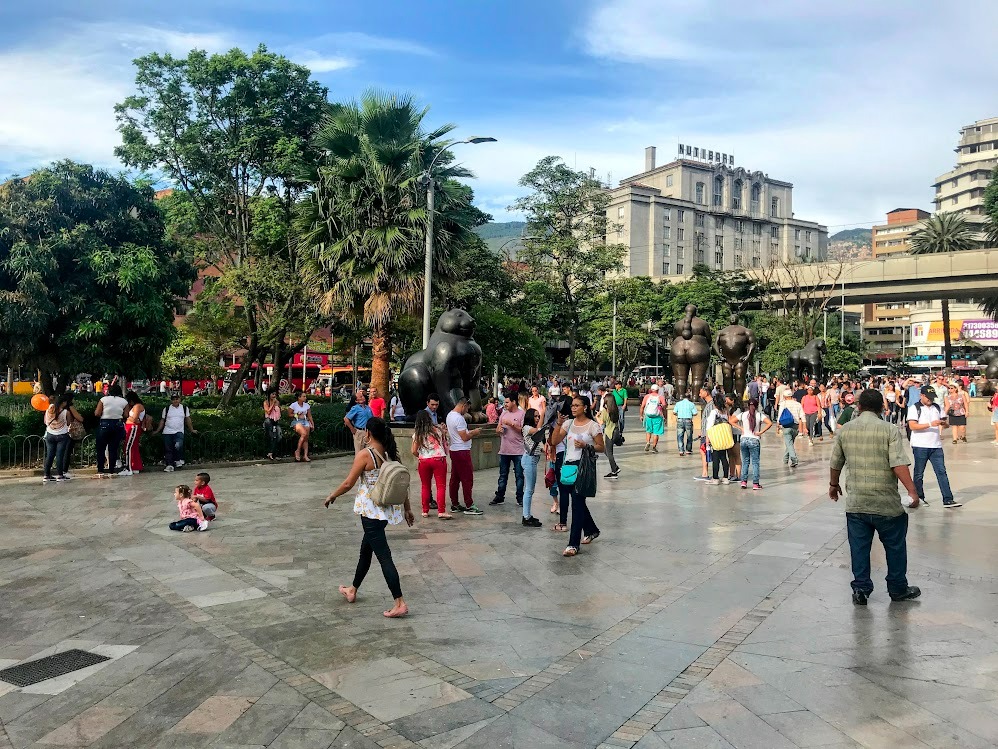
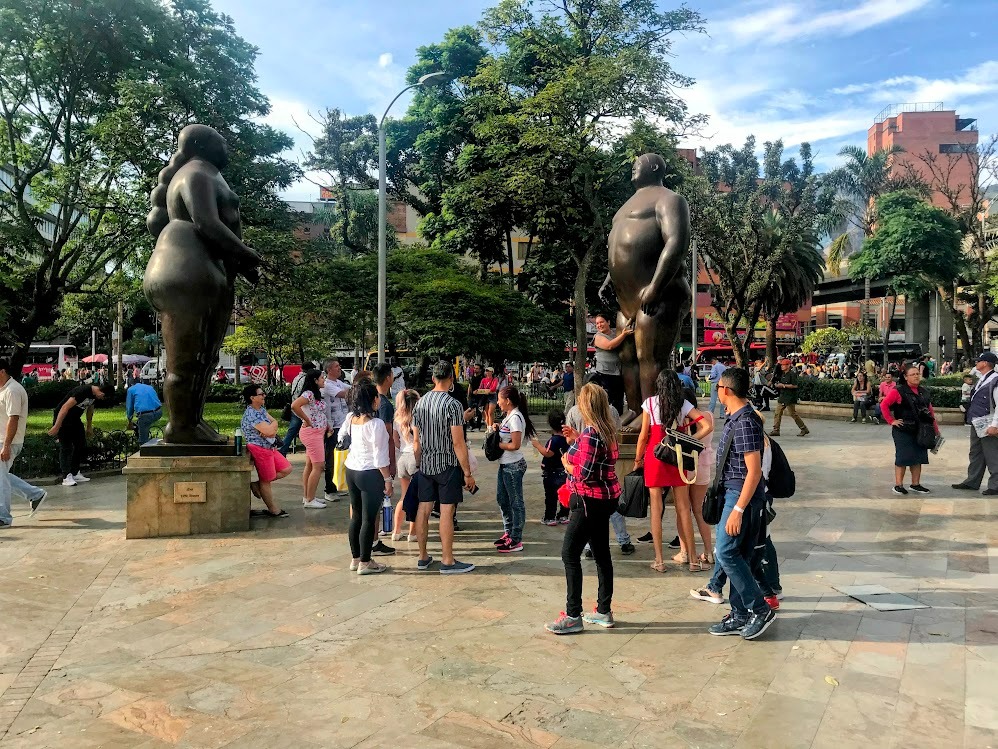
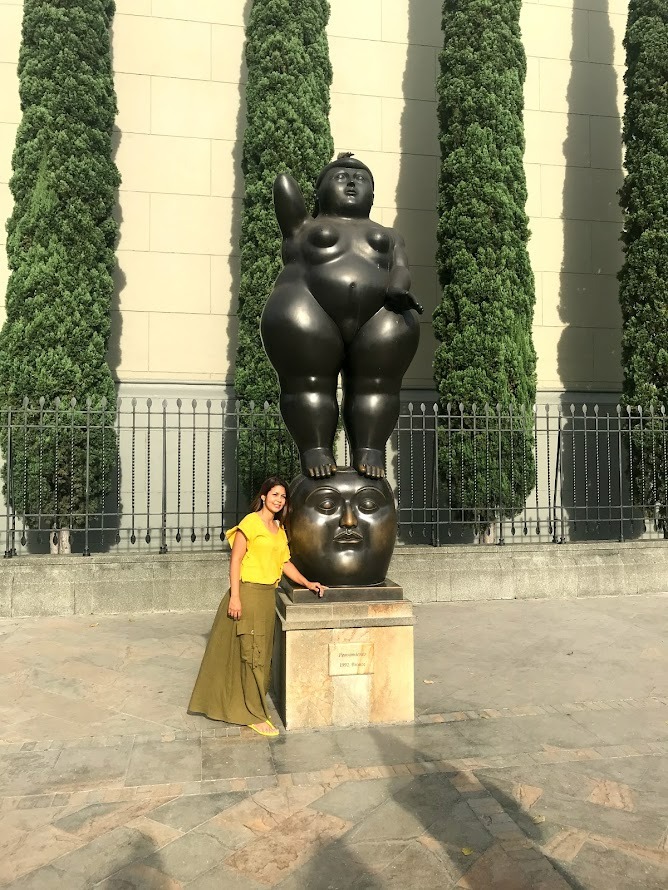
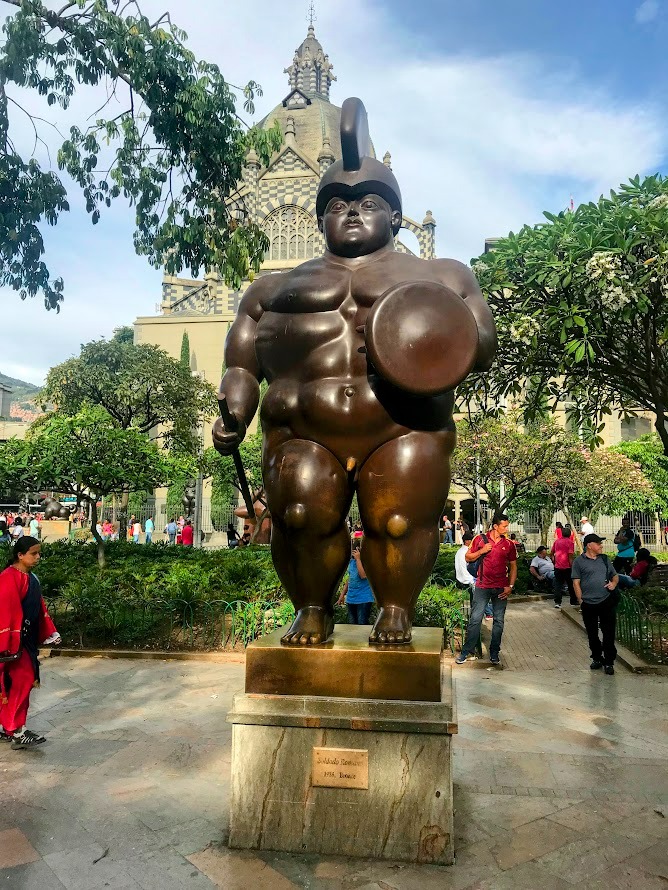
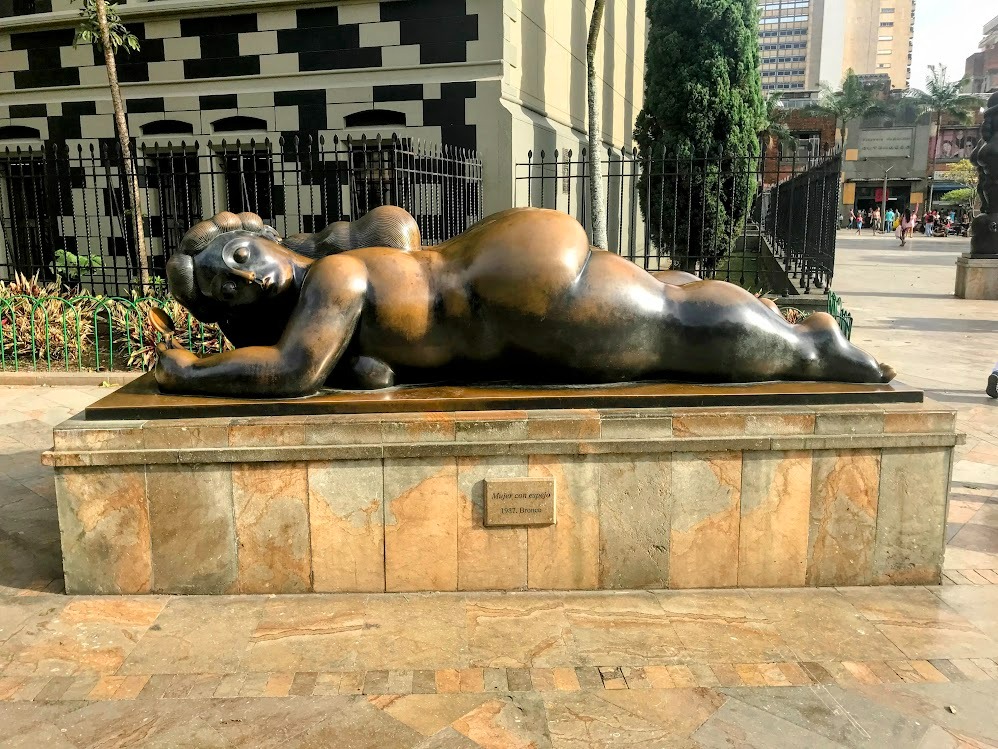
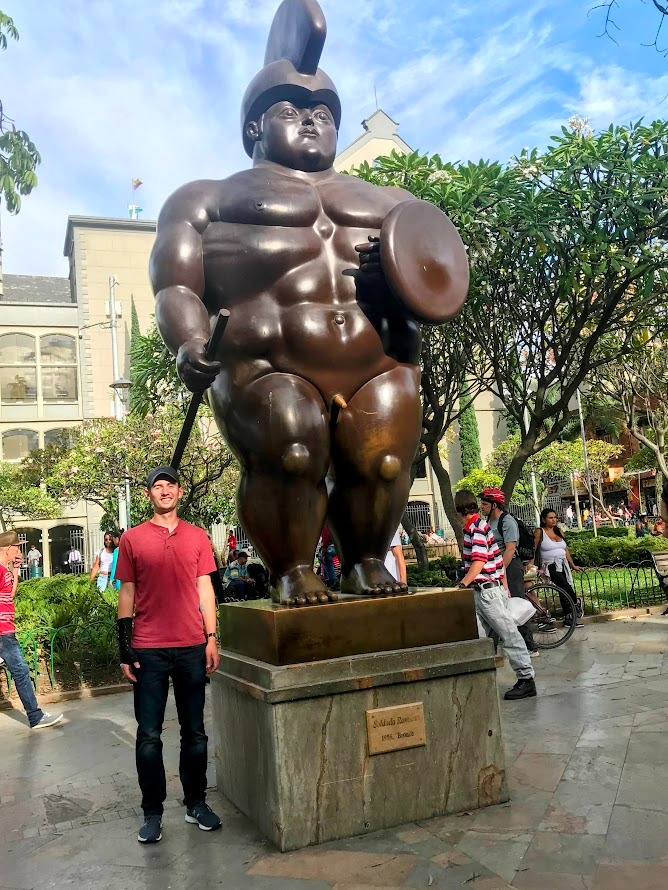
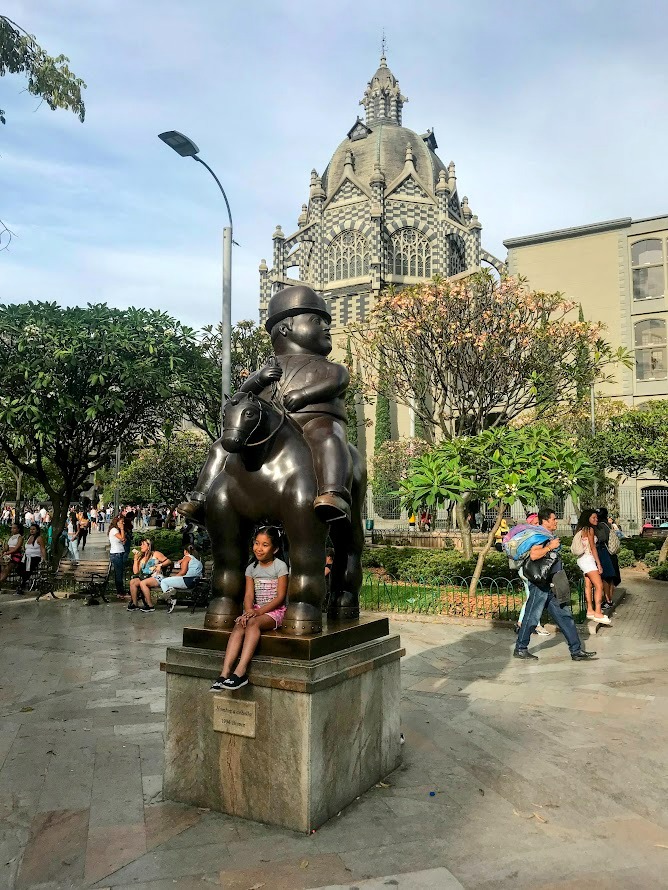
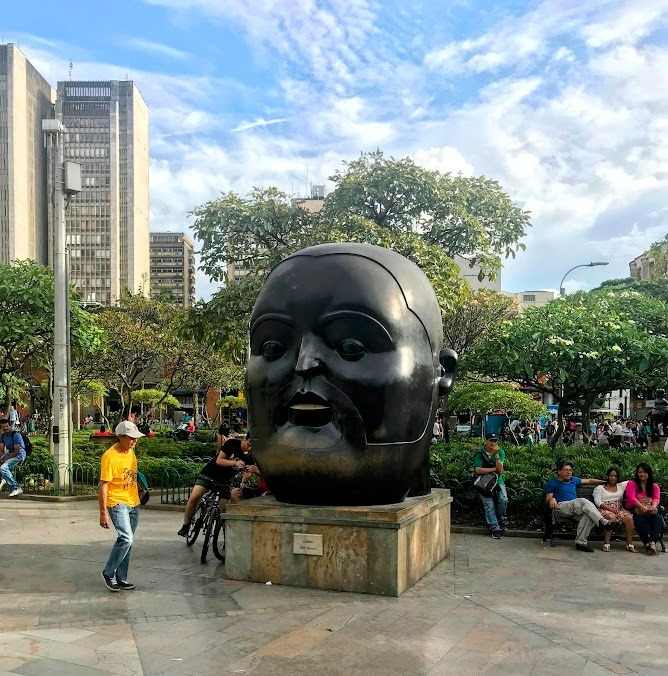
5Q) El Pájaro
One of Botero's most famous statues is "The Bird," which is located in the Plaza San Antonio, another plaza in La Candelaria. There are two birds in the picture below. "The Bird" is the one on the left.
This bird is famous because it was damaged in 1995 when a bomb exploded next to it. If you zoom in or look closely, you can see the hole through its body. To this day, no one knows with certainty who is responsible for planting the bomb.
In 2000, Botero donated a new, identical bird (the one on the right), but requested to leave the original sculpture semi-destroyed. He said, "I want that [it] remains as a memory of the stupidity and criminality of Colombia."
The bird on the right is called Ave Gorda, or "Fat Bird." The birds together are known as Los Pájaros de Paz, or the The Birds of Peace.
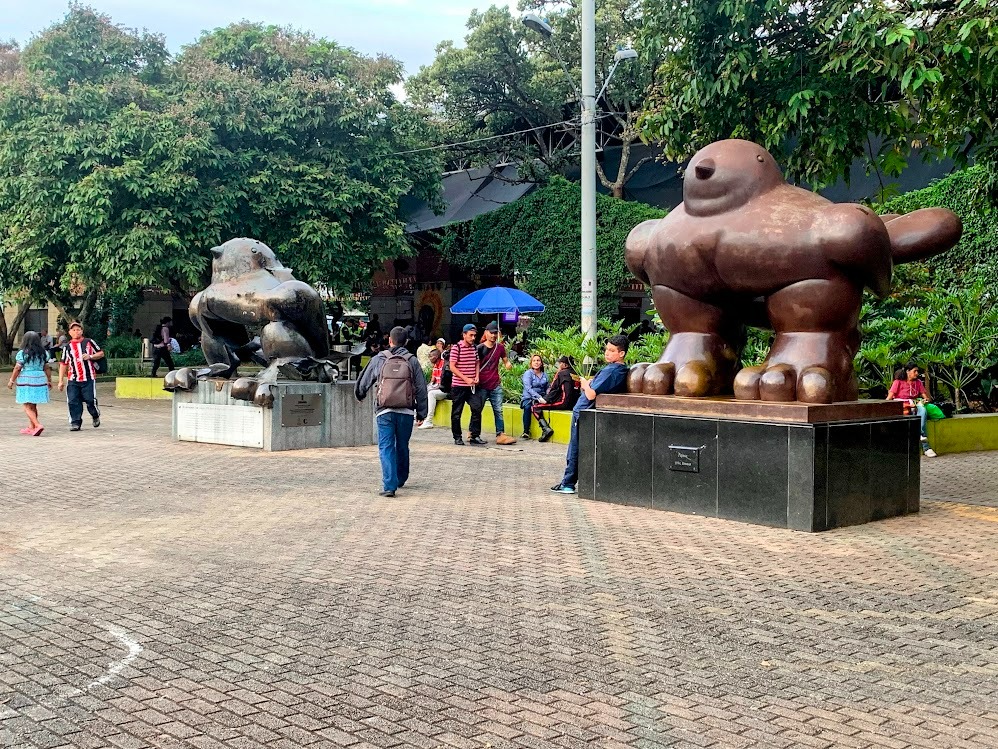
Part 6: Hope
The second aspect of the seventh stage of grief is hope. Hope and optimism is on display all throughout Medellín. There aren't really any pictures that can encapsulate this. I heard and felt the hope through the people.
At the beginning of our walking tour, our tour guide explained that a lot of people would attempt to talk to us. He asked that we don't let them bother us. He explained that most of them recognize that we are tourists and simply just want to say hello. He asked that we embrace them. He explained that after so much violence, now that the country is starting to open up to tourism, the people of Medellín are so excited to show off and share the beauty of their country.
The people that we met in Medellín truly were incredibly welcoming and kind. There was one guy who threw salt at me because I asked him to leave us alone at a café after he had asked us for money a few times, but this could happen anywhere in the world. Restaurant workers brought us extra portions and bid us feliz noche as we left. One waitress shed tears when we told her how beautiful we found the country to be. Our friend Daniel, who we met on a hike, invited us to a soccer game, where his group of friends embraced us, making friendly conversation and teaching us the songs of their supporters' group.
Some people in my circles in the U.S. who heard that I was going or went to Colombia would respond by asking questions like, "Why would you ever do that?" "Are you sure it's safe?" and "Are you going there to do cocaine?" Colombians have to deal with a reputation that has been given to them and their country due to small, aggressive groups who do not represent the majority of the country's people, but because of their ruthlessness have dominated the country and plagued it with violence for centuries. I feel so lucky to have been able to visit Medellín. The city's history is both gut-wrenching and impressive. And despite all the struggles of the innocent people whose families have lived here for generations, their optimism and hope for a better future shows how precious they are.
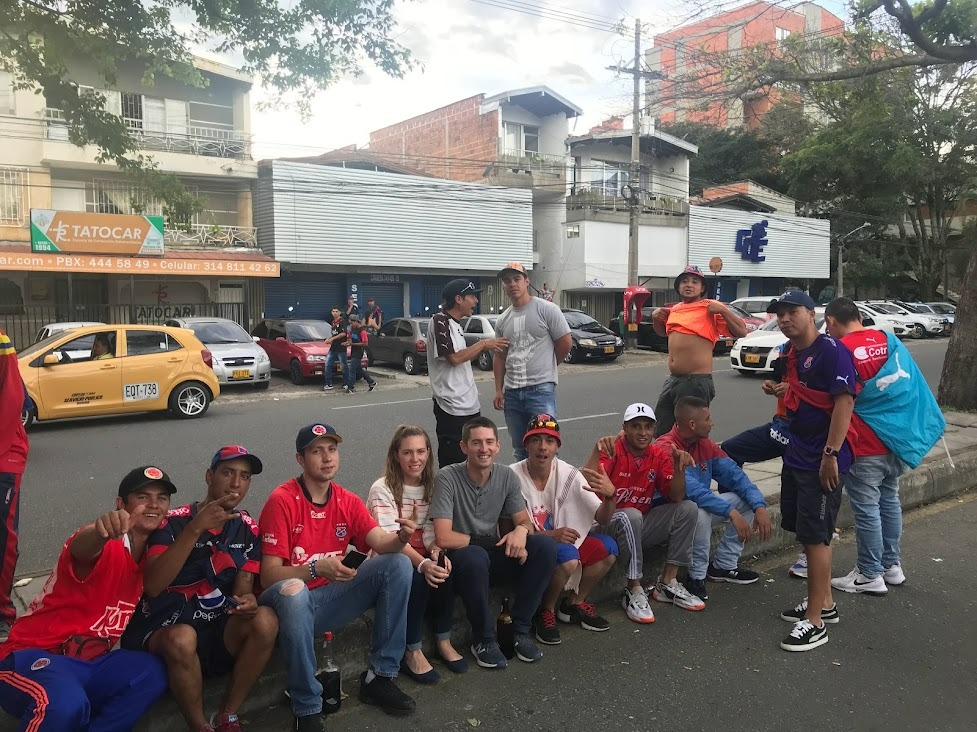
Post a comment